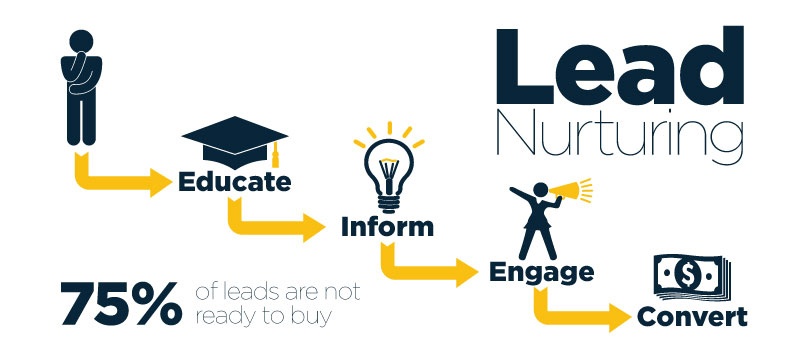 Hit the number. Three words that stand out and dominate the thinking of growth-oriented sales executives across the world. It’s no surprise that so much attention is paid to these words, as research continues to indicate that most salespeople are not hitting the number.
Hit the number. Three words that stand out and dominate the thinking of growth-oriented sales executives across the world. It’s no surprise that so much attention is paid to these words, as research continues to indicate that most salespeople are not hitting the number.
While there are plenty of blog posts, articles and books (oh my, there are a LOT of books) on the topic of selling better, I’ve found that the vast, vast majority of them take an individualized, technique-oriented approach to driving better sales results (heck, I’m sure I’ve written several of them).
What they miss is the structure. Don’t get me wrong. Skills, behaviors, motivation and technique are all very important. But, if you really want to unlock performance and you want to sustain it, you need to focus on the structure of your approach.
Increasingly I find that while salespeople could certainly stand to improve their abilities, the real barrier to sustained results is that very few companies have taken the structural approach to create the environment of success.
Think of it this way. The New England Patriots are a consistently successful team (and, yes, it hurts me to say this). If you look at their roster, you’ll see that they don’t have the best talent every year. As a matter of fact, their claim to fame is that they consistently “perform above their talent level.”
Bill Belicheck is a core reason for this performance, and there’s no one who is a better example of taking a structural approach to success. He understands the rules, the strategies and the approach better than anyone (and Ravens fans know exactly what I’m talking about). Because he’s mastered the game, he creates the environment for success.
We should be taking the same approach to selling, and hitting “the number.” Today I’m going to focus on the four keys to focus on in creating this environment before a lead becomes sales qualified. Tomorrow I’ll focus on what you need to do after.
1. Build the Top of Your Funnel to Be 5x Bigger Than You Think You Need
I (and many others) have written about the myth associated to hiring salespeople when your goal is to close more sales. In the assessments I’ve done of mid-market organizations over the past two years, the most common mistake I see is that sales structures are ineffective.
Most sales organizations have more field salespeople (for lack of a better descriptor) than they need and no where near enough resources (people and focus) on generating and developing qualified leads. This imbalance not only makes it hard (or impossible) to accelerate growth adequately, it also results in much higher costs than are necessary.
It is not at all unusual that I’m introduced to a growth-focused company because they are looking to successfully hire salespeople. Whether they’re looking to hire one or more, my first question is always the same: How overloaded are you with qualified leads?
Nine out of ten times (conservatively) the answer is that they don’t have enough leads to keep their current sales team busy. Simply put, this is a recipe for failure (and paying too much for growth).
I can’t remember where I got this battle-cry, but always remember you cannot have predictable growth without predictable lead generation. If you want to to build a predictable, high-growth engine you must build an extraordinarily strong top of the funnel - far stronger than you will most likely feel like it needs to be.
If growth consistent, sustainable growth is a high priority, invest in the top of your funnel ahead of the bottom. It may - may - slow down closed sales in the short-term, but it will more than make up for it over time.
2. Master Lead Nurturing
An important reason for building top of funnel assets is that regardless of how focused you, the seller, may be on generating short-term sales, the vast majority of your market isn’t thinking about buying anything - from you or your competitors. Most research shows that somewhere between 3 - 15% of the companies in a mature market are in any type of buying mode (less in non-mature markets).
When you haven’t built a strong top to your funnel, you waste tremendous resources in creating awareness with potential prospects who just aren’t in a mode to actively engage. Gleastner Research shows that 75% of the leads you create won’t buy anything within a year (at least), and SiriusDecision research indicates that 98% of Marketing Qualified Leads never result in closed sales.
This means that if you want to build the machine that enables your salespeople to hit their number consistently, you must master lead nurturing.

Download The Executive’s Guide to Effective Lead Nurturing
There are a multitude of lead nurturing tactics you should be using. Here’s the key. Lead nurturing is not about blasting prospects with sales pitches. It’s about focusing on creating value throughout the buyer’s journey, and connecting that value towards a clear path that leads to sales opportunities.
3. Design A Strong Middle Funnel/MQL Approach
Think of the top of the funnel as preparing the soil to grow your desired crops and planting the seeds. The middle of the funnel is all about cultivating and pruning to maximize the yield of your efforts.
The middle of the funnel is where the roots take hold and the crops get formed. This is the phase that will determine how well the crops grow and what the real yield will be.
What’s frustrating is that so many people blow this crucial area. They do the right things to create awareness and initial engagement (in the form of leads). Then they either ignore the middle (after all, it’s “inbound marketing” aren’t they supposed to call us and tell us they want to do business after they download our super-awesome white paper?), or they start selling their solution too early.
It’s easy to get confused here. When a lead is in the middle of the funnel, they’ve acknowledged (at least a bit) that they have a problem. They’re seeking to understand how they might be able to solve the problem and what options exist. Given this, it’s understandable that sellers and marketers get confused and start focusing on why they’re offer is the best.
Think of it this way, your prospects have to make three decisions before they buy from you:
- Why change?
- Why change now?
- Why change with you?
The middle of the funnel is still focused on teaching to the first two questions. You still need to be focused on “selling the problem,” educating your prospects on understanding the causes of the problem and the best way to solve the problem. These are all important parts of your commercial teaching-point-of-view.
There are two pieces to mastering the middle of the funnel:
- You must develop effective lead nurturing approaches designed for the middle.
- You must implement a defined, disciplined lead management and follow up process. In other words, don’t wait for your leads to call you, you must be able to reach out to them in a proactive manner.
4. Have Strong Lead Definitions
Over the last 18 months, I’m seeing more and more growth organizations talk about the different phases of a lead’s life cycle. More small and mid-market businesses are using terms like MQL and SQL in their sales and marketing processes.
However, when I probe a bit deeper I quickly learn that while they use different terms, the definitions behind those terms are not clear to everyone. This leads to complexity and confusion, which makes everyone’s job harder.
I’m a big (BIG) fan of integrating marketing activities with active sales processes. The primary reason that most organizations don’t utilize marketing in their active sales processes is because it creates confusion for the prospect. It’s not at all uncommon for a salesperson to yell - or say, “I don’t want marketing touching my pipeline! Every time they do, they blow it!.”
The reason for that is there’s no alignment; and you can’t have alignment without clear definitions. Spending the time, upfront, to create clear, strong definitions for your lead’s life cycle will go a long way to enabling everyone to work together and drive better results.
Tomorrow I will be sharing 5 keys that occur after a lead becomes sales qualified. But whatever you do, don’t overlook these four keys to a strong foundation. Without building such a foundation, far too much pressure falls on your salespeople and the likelihood of consistent success is greatly diminished.


 Doug Davidoff
Doug Davidoff